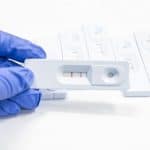Methamphetamine (also called meth or crystal meth) is a highly addictive drug. As a central nervous system stimulant, it causes a rush of energy and euphoria (intense joy). However, it can also make you feel angry, anxious, and paranoid.
Because the drug is so powerful, even occasional meth use can lead to addiction. Like other substance use disorders, methamphetamine addiction poses severe health risks. Fortunately, it’s treatable.
Effects Of Meth Addiction
A person with meth addiction may experience psychological, physical, and social side effects.
Psychological Effects
Meth impacts your brain’s production of dopamine. Dopamine is a neurotransmitter (brain chemical) that regulates your mood and motivation.
According to the United States Drug Enforcement Administration (DEA), prolonged meth exposure can damage up to 50 percent of your dopamine-producing brain cells.
Meth’s effects on dopamine can cause a variety of psychological symptoms, including:
- mood swings
- anxiety
- increased wakefulness and trouble sleeping
- poor judgment
- confusion
- memory loss
- aggression and violence
Meth can also cause psychosis, which is a temporary loss of connection with reality.
The most common symptoms of psychosis are paranoia (irrational distrust of others), delusions (beliefs that aren’t based in reality), and hallucinations (sensory perceptions, such as images or sounds, that don’t exist in reality).
Many people with meth addiction hallucinate that bugs are crawling on or under their skin. They may then pick at their skin excessively, leaving scars and scabs. This condition is called “meth mites.”
Physical Effects
Meth addiction takes a serious toll on your body. You may experience:
- severe tooth decay (also called “meth mouth”)
- reduced appetite and severe weight loss
- nausea and vomiting
- high blood pressure, which can lead to heart attack and stroke
- dangerously high body temperature (hyperthermia)
- rapid breathing
- rapid and/or irregular heart rate
- convulsions
- seizures
- premature osteoporosis (a condition that weakens the bones)
- damage to the heart, brain, liver, kidneys, or lungs
Meth addiction also increases your risk of infectious diseases like HIV and hepatitis C. That’s because meth impairs your judgment, which means you may share needles for injecting meth or engage in risky sexual behaviors, such as unprotected sex with multiple partners. These behaviors pose a high risk of infection.
Also, if you already have HIV/AIDS, meth can worsen the disease’s effects, especially its effects on thinking and memory.
Social Effects
Since meth addiction affects your mood and thinking, it seriously threatens your personal and professional life. For example, you might experience:
- damaged relationships
- performance issues at work or school
- job loss and financial problems
- trouble with the law
Learn more about the Short-Term & Long-Term Effects Of Meth
Signs Of Meth Addiction
The most common signs of meth addiction include:
- frequent cravings for meth
- physical changes, such as weight loss, scabs, and dental problems
- mood changes, such as anxiety, paranoia, and mood swings
- tolerance (needing increasingly higher doses of meth to feel the desired effects)
- physical dependence (feeling unable to function normally without meth)
In addition, if your loved one is struggling with meth abuse, you may find meth paraphernalia (items used for ingesting meth) in their home or car. These items may include:
- needles
- syringes
- glass pipes
- hollowed-out light bulbs or pens
- burnt spoons, tinfoil, or aluminum cans
- cut-up straws
Meth Withdrawal
If you’re physically dependent on meth and stop using it, you may experience withdrawal symptoms such as:
- extreme cravings for meth
- anxiety
- depression and suicidal thoughts
- loss of motivation
- dehydration
- dry mouth
- extreme fatigue
- increased appetite
- excessive sweating
- shakiness
- fever
- symptoms of psychosis, including paranoia, delusions, and hallucinations
While these symptoms are uncomfortable, they’re usually not life-threatening. In most cases, they start to subside one week after your last dose of meth. However, some withdrawal symptoms may last for weeks, months, or even a year, especially if you don’t receive professional help.
Learn more about Meth Withdrawal
Meth Addiction Treatment Options
Most people with meth addiction need professional treatment at a drug addiction treatment facility. Some people choose inpatient care, which means they live at the center and receive 24/7 supervision.
Other people choose outpatient care, which means they regularly attend the center while living at home. Talk to your health care provider to determine which option is right for you.
Whether you choose inpatient or outpatient care, your treatment team will work with you to create a personalized treatment plan. Most treatment plans for meth addiction include medical detox and behavioral therapy.
Medical Detox
During medical detox, doctors will help you manage meth withdrawal. They’ll closely monitor your health and may prescribe medications to ease certain withdrawal symptoms, such as anti-anxiety medications and fever reducers.
They may also administer intravenous (IV) fluids to treat dehydration.
Behavioral Therapy
In behavioral therapy, a mental health professional will help you identify your triggers (people, places, or other things that make you want to use meth).
You’ll then learn coping skills, such as deep breathing and journaling, so you can manage your triggers without relapsing. You may also receive motivational incentives, such as cash or gift cards, for staying drug-free.
Along with helping you recover from meth addiction, your therapist can help treat any underlying mental illnesses that contributed to your methamphetamine abuse, such as depression or bipolar disorder.
Other Treatment Services
Depending on your needs, your treatment plan may also include other services, such as:
If you or a loved one struggles with methamphetamine use or another form of drug use, please contact Northeast Addictions Treatment Center. Our substance abuse treatment programs offer therapy, support groups, and other evidence-based, recovery-focused services.
FAQ
How Long Does Meth Stay In Your System?
Meth can stay in your system for various lengths of time depending on the amount used and the way the drug enters the body. Meth can stay in your urine for up to one week, in your blood for up to three days, in your saliva for up to four days, and in your hair for up to 90 days.
To learn more, read How Long Does Meth Stay In Your System?
Can You Overdose On Meth?
Yes, you can overdose on meth if you take a dose that is too much for your body. How much is too much can depend on your weight, age, and how long you’ve used the drug.
Learn more about Meth Overdose
What Is Meth Made Of?
To make meth, the “cook” starts with either ephedrine or pseudoephedrine. Both of these ingredients are decongestants that appear in over-the-counter cold medications and weight loss products. The cook then combines the decongestant with various other substances, including:
- acetone (found in nail polish remover, paint thinner, and varnish thinner)
- antifreeze
- cat litter
- gasoline
- isopropyl alcohol (found in rubbing alcohol and various cleaning products)
- lithium (found in battery acid)
- red phosphorus (found in matches or road flares)
- rock salt
- sodium metal (found in table salt and baking soda)
- trichloroethane (found in gun cleaner)
Learn more about Meth Ingredients & Labs
What Is Meth Cut With?
Meth can be cut with fentanyl, baking soda, sugar, MSM, pseudoephedrine, and a number of other products. Impurities like lithium and hydrochloric acid can also end up in meth during production. Ingesting illegally made meth can cause serious side effects.
To learn more, read What Is Meth Cut With?
What Does Meth Look Like?
Meth is produced in several different forms, including a powder that is often white in color, crystals or rocks that are white or translucent, a sticky or waxy white, yellow, or brown substance, and various standard-looking pills or tablets.
To learn more, read What Does Meth Look Like?
Is It Possible To Identify Fake Meth?
Meth looks like a white, crystalline powder or a clear rock crystal. However, it can be hard to distinguish it from other drugs, which can make it easy for dealers to hide dangerous substances like fentanyl.
Test kits, like reagent tests, can help you identify if meth is present in the substance you are using. However, some of these test kits cannot tell you how pure the meth is, which means other potentially dangerous additives could be present.
Learn more about how to identify Fake Meth
What Does Meth Smell Like?
Meth often has a chemical, rotten egg, or ammonia odor. This is due to the chemicals and volatile materials used to make it.
To learn more, read What Does Meth Smell Like?
What Does Meth Taste Like?
Most people describe the taste of meth as bitter and chemical-like. The taste may also reflect the drug’s ingredients, which might include:
- anhydrous ammonia, which tastes like cat urine
- sulfuric acid, which tastes like rotten eggs
- acetone, which tastes like paint thinner
To avoid these unpleasant tastes, some people refuse to ingest the drug by mouth. Instead, they snort, smoke, or inject it.
To learn more, read What Does Meth Taste Like?
What Happens When You Smoke Meth?
Smoking meth can cause fast-acting effects such as increased energy, loss of appetite, high blood pressure, and rapid heart rate. Meth can also cause long-term side effects, including psychosis, weight loss, erratic behavior, and drug addiction.
Learn more about Smoking Meth
Can You Vape Meth?
Because methamphetamine is water-soluble, it can be ground down, mixed with e-liquid, and consumed using a vape pen or other e-cigarette device.
However, this method of meth use is extremely unsafe and puts you at risk of addiction, lung damage, and a wide range of other short- and long-term health risks.
Learn more about Vaping Meth
What Are The Health Consequences Of Using A Meth Pipe?
Using a meth pipe is dangerous and carries several health risks, including burns, cuts, blisters, and sores around the mouth. These wounds can crack and bleed, which can lead to infection if left untreated.
Sharing meth pipes that have traces of blood on them can spread infections like HIV and Hepatitis C. Long-term crystal methamphetamine use can lead to cavities, tooth decay, and tooth loss.
Using homemade meth pipes, made of aluminum cans or tin foil, increases the risk of inhaling toxic fumes.
Learn more about Crystal Meth Pipes
What Happens When You Snort Meth?
Snorting meth delivers a large dose of the drug into the bloodstream through the delicate mucus membranes of sinuses, resulting in a powerful and addictive euphoria/increased energy.
However, snorting meth may also cause nosebleeds, sinus injuries, and can permanently damage the lining of the nose and the nasal cartilage.
Learn more about Snorting Meth
What Does It Mean To Booty Bump Meth?
Meth plugging, also known as booty bumping, is the process in which a person administers methamphetamine into their rectum to increase the intensity of their high.
Those who continuously engage in this practice may experience a wide range of side effects that can lead to damaging mental and physical health concerns.
Learn more about Plugging Meth
Is It Possible To Recover From Meth Addiction?
Although meth use is associated with a high rate of relapse, you can recover from meth addiction. If you are willing to take the step to reach out for help, you can find supportive and compassionate professionals who are trained to help those suffering from meth addiction.
One of the most effective methods is behavioral therapy, which helps you learn to identify and change behaviors associated with substance abuse. Other services, like aftercare, are an additional support system as you transition out of treatment and learn to apply new life skills.
Learn more about how to maintain Meth Addiction Recovery
Sources
Written by
Northeast Addition Editorial Team
©2024 Northeast Addition Center | All Rights Reserved
This page does not provide medical advice.




